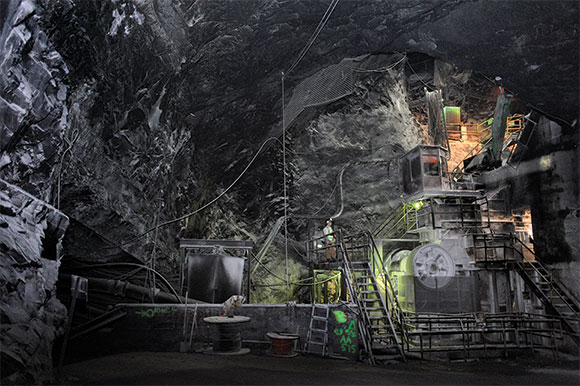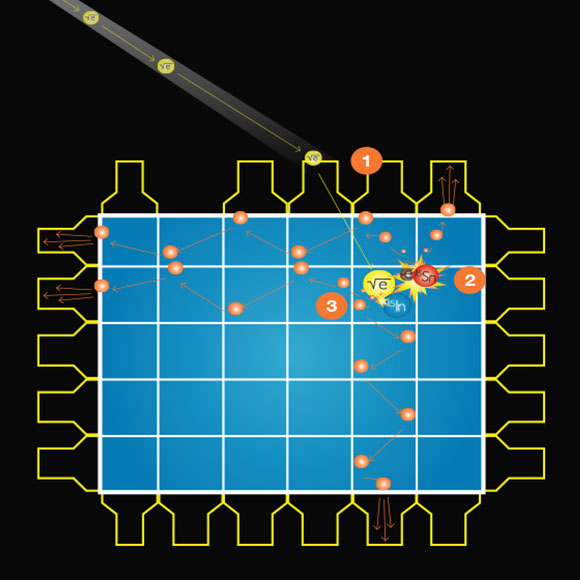HOW TECH TICKS

Thirty minutes up U.S. 460 from the Virginia Tech campus and another 20 minutes down a rocky underground road, researchers around the country conduct physics experiments to boost national security and help explain the nature of the universe.
Operated by the Virginia Tech Department of Physics, Kimballton Underground Research Facility (KURF) sits in a cavern near the bottom of a working limestone mine in Giles County. Most experiments there focus on particle physics involving neutrinos and other subatomic particles. The roughly 1,750 feet of rock between the lab and the mountain's surface help filter cosmic rays that bombard the Earth's surface and obscure subatomic interactions. KURF's relatively low levels of background radiation provide a clearer picture of subatomic particle interaction.

The experiments at KURF include a pair of attempts to detect the presence of dark matter—the subject of much debate and disagreement in the physics world—by observing how particles behave when colliding in liquid argon and crystal germanium. Another project seeks to analyze background radiation to develop sensors that can detect from an offshore location whether rogue states are manufacturing nuclear weapons.
A Virginia Tech team uses KURF as a test site for its Low Energy Neutrino Spectroscopy (LENS) project (described below), which will measure the sun's low-energy neutrino spectrum. The project—currently in a demonstration test phase—may ultimately help answer questions about the sun's energy production.

 neutrino
neutrino
 indium atom
indium atom
 electron
electron
 photon
photon
 tin atom
tin atom
Currently Virginia Tech researchers are testing a model LENS matrix in a prototype setup that uses an organic liquid scintillator. The full setup, when complete, will use an organic liquid scintillator doped with the chemical element indium and will work as follows:
 A neutrino emitted by the sun reaches the earth and passes though the rock to eventually enter the LENS matrix.
A neutrino emitted by the sun reaches the earth and passes though the rock to eventually enter the LENS matrix.
 A neutrino is captured by an indium atom, resulting in an "excited" tin atom and a negatively charged electron that creates a small flash of light.
A neutrino is captured by an indium atom, resulting in an "excited" tin atom and a negatively charged electron that creates a small flash of light.
 The light flash sends photons along the matrix's X, Y, and Z channels. The photons strike plates on photomultiplier tubes, generating electrons. The electrons collide with a series of plates, amplifying these small signals and allowing physicists to pinpoint the location of the interactions within the matrix.
The light flash sends photons along the matrix's X, Y, and Z channels. The photons strike plates on photomultiplier tubes, generating electrons. The electrons collide with a series of plates, amplifying these small signals and allowing physicists to pinpoint the location of the interactions within the matrix.
4) The excited tin atom then emits a pair of delayed gamma rays within a distinct time frame, confirming to researchers that the first flash came from a neutrino collision and not another source.
Researchers estimate LENS will observe roughly 600 neutrino captures per year and will operate for five-plus years. Tracking these interactions will allow researchers to map the solar neutrino energy spectrum, which will help them to understand how the sun produces energy and to answer questions such as whether the sun is getting hotter.
Produced by University Relations